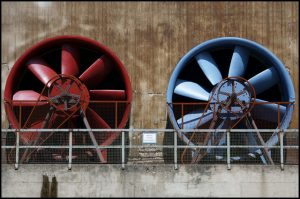(Originally posted on LiveJournal)
 Back in this entry, I described the inspiration of the science fiction short story I’m working on, titled “The Beauty of Turbines”.
Back in this entry, I described the inspiration of the science fiction short story I’m working on, titled “The Beauty of Turbines”.
Now, I admit, I have not been as diligent as I would like in working on it. But I have been making progress. I still feel rusty at working in the short story format.
Part of it is a matter of how my brain wants to organize material for storytelling. It’s not consistent from one project to the next. Most projects get an outline of some sort or others, at least touch-points for major blocks. For novels, I usually dash down a couple of sentences for each chapter, to remind myself of what needs to be covered in each chapter. For screenplays, I tend to start from some standard story structure as a guideline for how I should present my story. Comic book scripts get planned according to the comic book page count, so I can plan for 2 page spreads and page turns, so the story struction guideline gets planted on top of that, and then a sentence or two of what needs to appear on each page to move the story forward.
But short stories… they end up getting handled differently. I get a general idea for the story and write that down. So I know, sort of, where the story will be going. I get to know the characters involved. And then I just start writing once I know what the main conflict will be. I let the story “just happen” to me as I go along.
In the case of “The Beauty of Turbines”, as I mentioned in the earlier post, once I got a taste of what the story was about, the definition of the possible conflict introduced an element to the story that surprised me. Basically, it has to do with a religious outlook — of the aliens in the story. When they meet humans, elements of our planet and sciences calls in question a core belief of theirs. Well, not so much a belief as a religious practice. When I began the story, it never occured to me that religion was going to enter in. I thought I was just setting out to write a (semi-) hard science fiction story, based on some engineering matters. But once religion entered in, I couldn’t shake it – it seemed so right for the story. And – to my surprise – when I describe the story to others (in more detail than I’ve done here), they like it.
But this… “organic” process of writing the story, without more than a general vision of its shape, does strange things. In this first draft, I’m just letting the story come out as it chooses to do. And, for once, I know what some of the re-writing will involve: boiling down dialogue exchanges, trimming things. I don’t usually have that sense – in this case, it’s as if one part of my brain has given the other (creative) part freedom to just go at it as it wants too, instead of trying to micro-manage during the writing of the first draft. But that’s “outside the story”.
“Inside the story”, I keep being delightedly surprised at the details that show up. For instance, the aliens are of saurian sort, and so, certain consonant clusters are difficult for them to pronounce. That started just with an almost stereotypical impression that a saurian would speak in a more hissing fashion, more into sibilants and fricatives than the stopped sounds. This is a factor I don’t usually take into account, except when writing poetry. Yet, there it was.
These sorts of creative twists and turns fascinate me. And, of course, spending some time musing on them is a pleasing form of procrastination.


